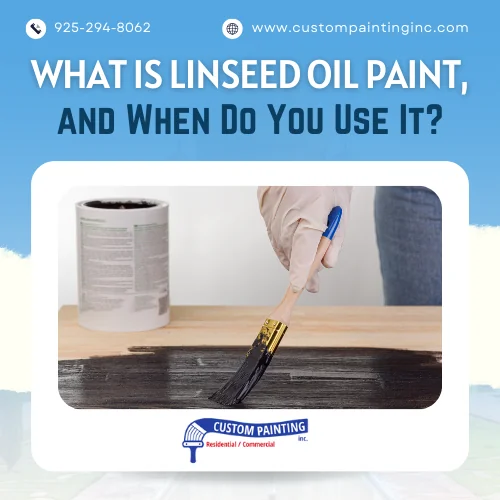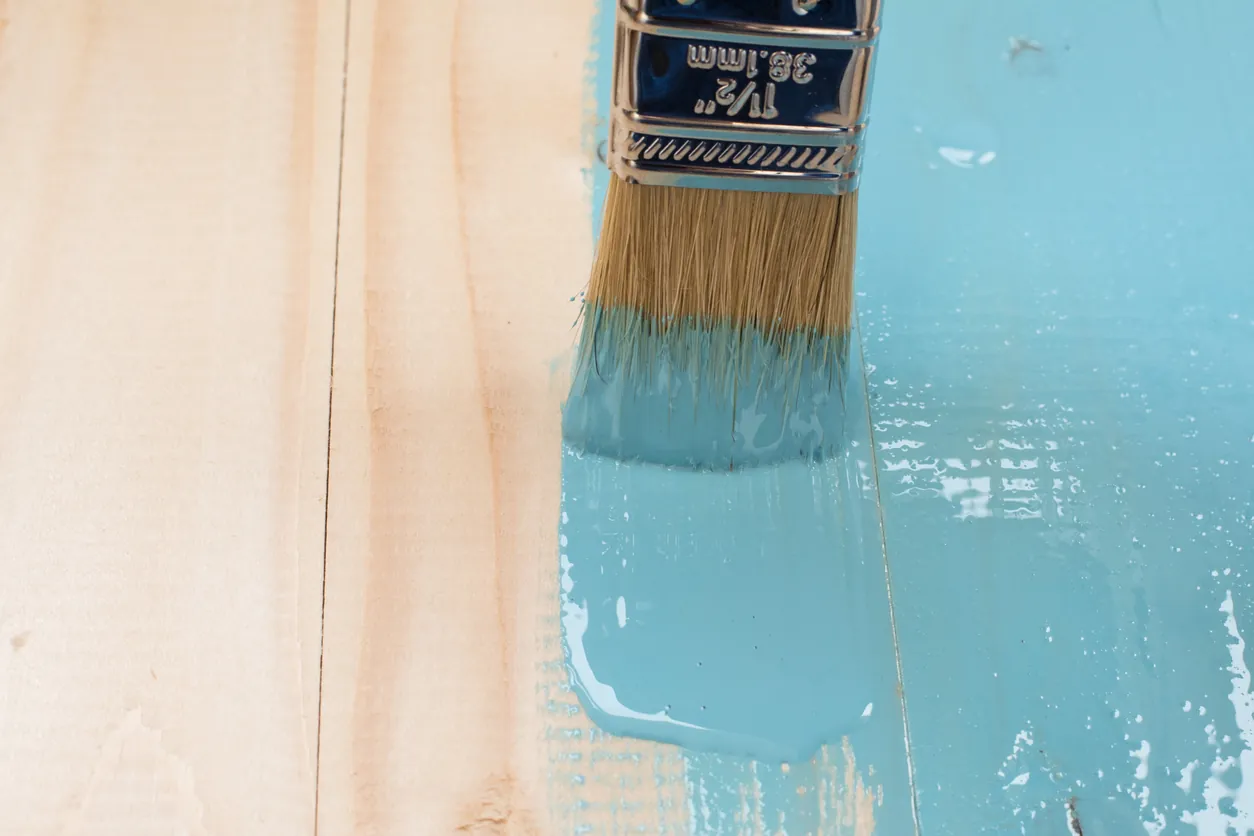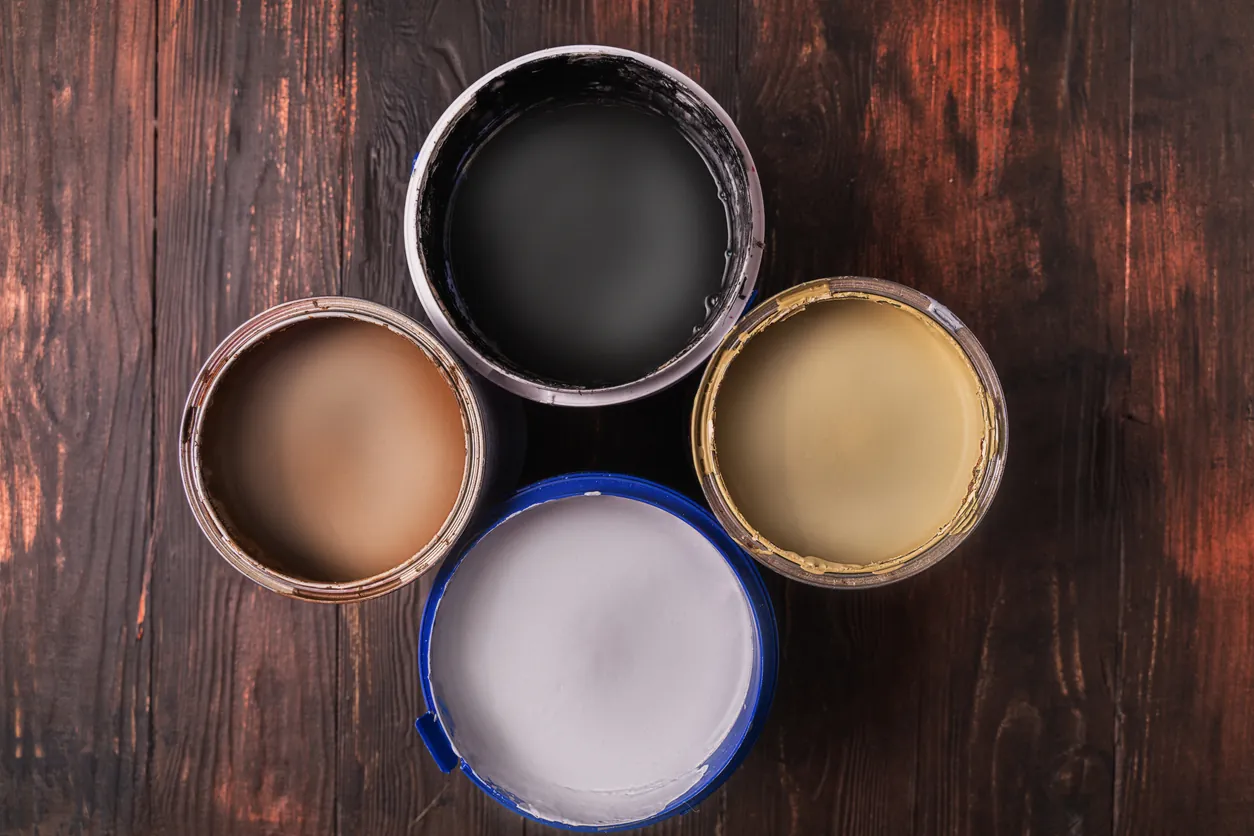Linseed oil paint is a traditional type of paint made from natural ingredients, primarily from flax seeds. This paint is known for its durability and flexibility, has been used for centuries, and is valued for its eco-friendly properties and natural finish. Linseed oil paint penetrates the surface, providing a breathable layer that allows moisture to escape, preventing peeling and cracking.
Linseed oil paint has seen a resurgence in popularity among the painting community due to its environmental benefits and long-lasting performance. Artists and home renovators appreciate its non-toxic nature and the beautiful, natural finish it provides. Its ability to age gracefully and protect surfaces from weathering makes it a preferred choice for exterior and interior applications.
What is linseed oil paint?
Linseed oil paint is a natural paint made primarily from linseed oil, derived from the seeds of the flax plant (Linum usitatissimum). The composition typically includes:
- Linseed oil: The main binder that provides durability and a hard finish.
- Pigments: Provide color and opacity.
- Driers: Metal salts (such as cobalt or manganese) that accelerate the drying process.
- Solvents: Sometimes added to improve the application and drying process, though traditional formulations often exclude them.
History and origins
Linseed oil paint has a long history dating back to ancient times. It gained prominence in Europe during the Middle Ages for use in art and decorative painting. By the 15th century, it was widely used in the Netherlands and Italy, favored by artists for its versatility and durable finish. By the 18th and 19th centuries, it became a staple in residential and commercial building applications, prized for its durability and the rich, deep finish it provided.
Types of linseed oil used in paints
Several types of linseed oil are used in the production of linseed oil paint:
- Raw linseed oil: Extracted and filtered but not chemically treated. It dries slowly and is often used where long open time is required.
- Boiled linseed oil: Raw linseed oil that has been heated and treated with drying agents. It dries faster than raw linseed oil and is commonly used in wood finishes.
- Stand oil: Linseed oil is heated to a high temperature in the absence of oxygen, resulting in a thicker consistency. It provides a smooth, glossy finish and is less prone to yellowing over time.
- Polymerized linseed oil: This is similar to stand oil, but it is polymerized by heat and air exposure, offering a balance between drying time and film properties.
These various types of linseed oil allow for customization in paint formulations, optimizing drying times, durability, and finish quality depending on the application requirements.
Benefits of using linseed oil paint
- Durability and longevity: Linseed oil paint forms a flexible, breathable layer less prone to cracking and peeling over time. It penetrates deeply into the wood, providing excellent protection against moisture and extending the lifespan of the painted surface.
- Richness and depth of color: The natural oil in linseed oil paint enhances pigments, resulting in rich, vibrant colors with a unique depth and luminosity. As the paint ages, it develops a beautiful patina that adds character to the surface.
- Environmental advantages: Linseed oil paint is made from natural ingredients, making it eco-friendly and biodegradable. It contains no harmful solvents or VOCs (volatile organic compounds). VOCs are common in conventional paints and can negatively impact indoor air quality.
- Versatility in various applications: Linseed oil paint can be used on numerous surfaces, including wood, metal, and masonry. It adheres well to both new and previously painted surfaces, making it suitable for interior and exterior applications.
When to use linseed oil paint?
Linseed oil paint is ideal for those seeking a traditional, durable finish for wood, metal, and masonry surfaces, particularly in historic restorations and exterior applications. While it has a longer drying time than acrylic and latex paints, its deep penetration and flexibility offer superior longevity and protection, especially in varying environmental conditions.
Here’s when to use this linseed paint and comparisons with other paint types:
Ideal surfaces and materials:
- Wood: Linseed oil paint penetrates wood fibers, providing long-lasting protection and flexibility. It is ideal for both interior and exterior wood surfaces.
- Metal: Linseed oil can be used on metal surfaces with proper priming, offering good rust protection.
- Masonry: It is suitable for porous surfaces like bricks and stucco, as it allows the material to breathe.
Suitable environments and conditions:
- Historic restoration: Linseed oil paint is preferred for restoring historic buildings due to its traditional composition and finish.
- High-humidity areas: It performs well in areas with varying humidity levels as it expands and contracts with the substrate.
- Exterior surfaces: It is excellent for exterior use because it provides a durable and weather-resistant finish.
Comparison with other types of paint:
Acrylic paint:
- Drying time: Acrylic paint dries much faster than linseed oil paint.
- Flexibility: Acrylic paint is more flexible than linseed oil paint, making it less prone to cracking.
- Durability: It is good for both interior and exterior surfaces but may not penetrate wood as thoroughly as linseed oil paint.
-
Latex paint:
- Ease of use: Latex paint is easier to apply and clean up (water-based).
- Drying time: Latex dries quickly, often within hours.
- Breathability: It provides good breathability but may not offer the same level of durability on wood as linseed oil paint.
- Environmental impact: Latex is generally considered more environmentally friendly due to lower VOC emissions.
How to use linseed oil paint
Using linseed oil paint involves several steps, from surface preparation to application and maintenance. Here’s a comprehensive guide:
Preparation of the surface
- Clean the surface: Ensure the surface is clean, dry, and free of dirt, grease, or other contaminants. Use a mild detergent and water if needed.
- Sand the surface: Smooth out any rough areas with sandpaper. For wood, sand along the grain.
- Repair damage: Fill any cracks or holes with wood filler or putty, and sand smooth once dry.
- Prime (if necessary): Depending on the surface type and condition, you may need a primer. Some linseed oil paints do not need a primer, especially on wood, but check the manufacturer’s instructions.
Application techniques
- Stir the paint: Thoroughly mix the paint before use to ensure consistency.
- Apply thin coats: Use a natural bristle brush or a roller to apply thin coats of paint. Avoid overloading the brush or roller.
- Brush along the grain: For wood surfaces, apply the paint along the grain for better absorption and a smoother finish.
- Wait between coats: Allow each coat to dry thoroughly before applying the next. Typically, two to three coats are recommended.
Drying time and curing process
- Drying time: Linseed oil paint takes longer to dry than modern paints. Each coat may take 24 to 48 hours to dry, depending on humidity and temperature.
- Curing process: Full curing can take several weeks. During this time, the paint hardens and becomes more durable. Avoid heavy use or cleaning during the curing period.
Maintenance and care
- Regular cleaning: Clean painted surfaces with a mild soap and water solution. Avoid harsh chemicals that can damage the paint.
- Touch-ups: For minor scratches or chips, lightly sand the area and apply a thin coat of linseed oil paint.
- Reapplication: Linseed oil paint may need refreshing over time. Sand the surface lightly and apply a new coat to maintain its appearance and protection.
Additional tips
- Ventilation: Ensure good ventilation when painting to aid in drying and reduce fumes.
- Storage: Store linseed oil paint in a cool, dry place. Seal the container tightly to prevent the paint from drying out.
- Disposal: Carefully dispose of rags and brushes used with linseed oil, as they can spontaneously combust. Let them dry completely before disposal, or store them in a metal container with a lid.
Common misconceptions and FAQs
Myths about linseed oil paint
- It takes forever to dry: One common myth is that linseed oil paint takes an excessively long time to dry. While it does have a longer drying time compared to modern paints, it’s not as extreme as some believe. Properly applied, it typically dries in about 24-48 hours.
- It’s only for outdoor use: Another misconception is that linseed oil paint is only suitable for outdoor applications. In reality, it can be used indoors as well and is often chosen for its natural finish and durability.
- It’s not durable: Some people believe linseed oil paint isn’t as enduring as modern synthetic paints. However, linseed oil paint forms a flexible, breathable finish that can last many years, making it highly durable and less prone to cracking and peeling.
- It can’t be colorful: There’s a belief that linseed oil paint only comes in a limited range of dull, natural colors. You can mix linseed oil with various pigments to achieve a vast spectrum of vibrant hues.
- It has a strong odor: Many assume that linseed oil paint has a strong, unpleasant smell. While it does have a distinct odor, it is generally milder than the odor of many synthetic paints and doesn’t contain harmful VOCs.
Frequently asked questions about linseed oil paint
What is linseed oil paint?
- Linseed oil paint is made from linseed oil (derived from flax seeds) and natural pigments. It is known for its eco-friendly properties and traditional aesthetic.
Why use linseed oil paint?
- It is environmentally friendly, biodegradable, and free of harmful VOCs. It also offers excellent durability, flexibility, and a natural finish that enhances the beauty of the wood.
How do you apply linseed oil paint?
- Prepare the surface by cleaning and sanding it. Apply the paint with a brush, ensuring even coverage. It usually requires multiple thin coats, with proper drying time between each.
Can linseed oil paint be used on metal?
- Yes, you can use linseed oil paint on metal surfaces. When applied correctly, it provides good adhesion and protection against rust.
How long does It take to dry?
- Linseed oil paint typically takes about 24-48 hours to dry, depending on the environment and thickness of the application.
Is linseed oil paint safe for children’s furniture and toys?
- Yes. It is safe for children’s furniture and toys since it is non-toxic and free from harmful chemicals.
How do you maintain surfaces painted with linseed oil paint?
- Regular cleaning with a mild soap and water solution is usually sufficient. Over time, a light reapplication of linseed oil or a fresh coat of paint can help maintain its appearance and durability.
Can it be applied over existing paint?
- For best results, apply linseed oil paint over bare wood or metal. If you use it over existing paint, the surface should be thoroughly sanded and cleaned to ensure good adhesion.
Does it require special tools or brushes?
- While it doesn’t require special tools, using natural bristle brushes can help achieve a smoother finish. Proper brush cleaning with natural turpentine or soap and water is also crucial.
What are the environmental benefits?
- Linseed oil paint is made from renewable resources and is biodegradable. It does not emit harmful VOCs, making it a healthier choice for indoor air quality and the environment.
Conclusion
When considering your next painting project, give linseed oil paint a try. Its natural ingredients, longevity, and beautiful finish make it an excellent choice for anyone looking to enhance their home with a touch of timeless elegance.
Ready to transform your space? Contact Custom Painting, Inc. today for expert advice and professional service. Let’s bring your vision to life with the best quality and care. Call us at 925-294-8062 or use our contact form to request a free, no-obligation estimate!



